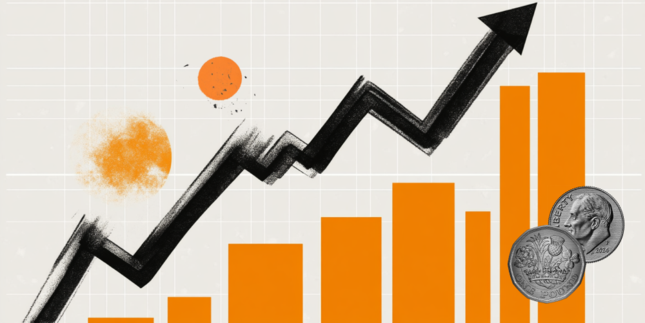- US traders keep watch on the Federal Reserve’s looming rate decision despite ongoing headlines about cuts.
- President Trump renews criticism of trade imbalances, sparking market chatter about new tax cuts and oil price demands.
- Solid US growth between 2.5% and 3.0% helps underpin the Greenback, though policy ambiguities weigh on sentiment.
- Jobless claims rise slightly, suggesting that labor market conditions remain resilient.
The US Dollar has turned flat during the US trading session on Thursday. US President Trump spoke at the World Economic Forum in Davos. The US Dollar Index (DXY) is back above 108.00, though it is facing some mild selling pressure again.
Daily digest market movers: USD sees red despite Trump hinting at tariffs for Canada and Mexico
- During his World Economic Forum appearance, President Trump restated that the US trade deficit with Canada is unsustainable and underscored his intent to seek deeper tariff measures if deemed necessary.
- He also proclaimed his commitment to slashing business taxes, pressuring OPEC to reduce oil prices and aiming to influence the Federal Reserve’s independence.
- New unemployment filings climbed to 223K for the week ending January 18, slightly above prior forecasts. The insured unemployment rate stands at 1.2% with continuing claims edging higher to nearly 1.9 million.
- Growth in the US economy remains robust at roughly 2.5%–3.0% annualized, powered by hiring gains that support consumption and keep inflation somewhat buoyant. Analysts widely expect the Fed to hold rates steady next week, seeing no compelling argument to cut soon.
- Kansas City Fed Manufacturing data is slated for release with the Services gauge following on Friday. Markets remain attentive to potential headwinds, but leading indicators suggest the US economy retains its underlying strength.
DXY technical outlook: Indicators struggle as the index fails to hold near 108.50
The US Dollar Index continues to fight off selling pressure but has yet to sustain gains beyond 108.50. Momentum signals, such as the Relative Strength Index (RSI), remain below the 50 threshold, indicating a weaker bias. The MACD’s red bars are expanding, hinting at growing bearish momentum.
The DXY stabilized around 108.20, though a lack of follow-through could lead to more downside. Without fresh catalysts to renew buying interest, the Greenback’s rebound may be short-lived, leaving it vulnerable to continued profit-taking.
Fed FAQs
Monetary policy in the US is shaped by the Federal Reserve (Fed). The Fed has two mandates: to achieve price stability and foster full employment. Its primary tool to achieve these goals is by adjusting interest rates. When prices are rising too quickly and inflation is above the Fed’s 2% target, it raises interest rates, increasing borrowing costs throughout the economy. This results in a stronger US Dollar (USD) as it makes the US a more attractive place for international investors to park their money. When inflation falls below 2% or the Unemployment Rate is too high, the Fed may lower interest rates to encourage borrowing, which weighs on the Greenback.
The Federal Reserve (Fed) holds eight policy meetings a year, where the Federal Open Market Committee (FOMC) assesses economic conditions and makes monetary policy decisions. The FOMC is attended by twelve Fed officials – the seven members of the Board of Governors, the president of the Federal Reserve Bank of New York, and four of the remaining eleven regional Reserve Bank presidents, who serve one-year terms on a rotating basis.
In extreme situations, the Federal Reserve may resort to a policy named Quantitative Easing (QE). QE is the process by which the Fed substantially increases the flow of credit in a stuck financial system. It is a non-standard policy measure used during crises or when inflation is extremely low. It was the Fed’s weapon of choice during the Great Financial Crisis in 2008. It involves the Fed printing more Dollars and using them to buy high grade bonds from financial institutions. QE usually weakens the US Dollar.
Quantitative tightening (QT) is the reverse process of QE, whereby the Federal Reserve stops buying bonds from financial institutions and does not reinvest the principal from the bonds it holds maturing, to purchase new bonds. It is usually positive for the value of the US Dollar.
Information on these pages contains forward-looking statements that involve risks and uncertainties. Markets and instruments profiled on this page are for informational purposes only and should not in any way come across as a recommendation to buy or sell in these assets. You should do your own thorough research before making any investment decisions. FXStreet does not in any way guarantee that this information is free from mistakes, errors, or material misstatements. It also does not guarantee that this information is of a timely nature. Investing in Open Markets involves a great deal of risk, including the loss of all or a portion of your investment, as well as emotional distress. All risks, losses and costs associated with investing, including total loss of principal, are your responsibility. The views and opinions expressed in this article are those of the authors and do not necessarily reflect the official policy or position of FXStreet nor its advertisers. The author will not be held responsible for information that is found at the end of links posted on this page.
If not otherwise explicitly mentioned in the body of the article, at the time of writing, the author has no position in any stock mentioned in this article and no business relationship with any company mentioned. The author has not received compensation for writing this article, other than from FXStreet.
FXStreet and the author do not provide personalized recommendations. The author makes no representations as to the accuracy, completeness, or suitability of this information. FXStreet and the author will not be liable for any errors, omissions or any losses, injuries or damages arising from this information and its display or use. Errors and omissions excepted.
The author and FXStreet are not registered investment advisors and nothing in this article is intended to be investment advice.
Recommended content
Editors’ Picks

EUR/USD attacks 1.0800 ahead of EU inflation data
EUR/USD is battling 1.0800 in the early European session on Tuesday, undermined by the latest US Dollar bounce. Traders keenly await the EU inflation data and the US jobs survey for further impetus as US President Trump's 'reciprocal tariffs' announcement looms on Wednesday.

GBP/USD treads water above 1.2900 ahead of US data, tariffs
GBP/USD is trading on the defensive while holding above 1.2900 in Tuesday's European trading. The pair loses ground amid a modest US Dollar uptick as traders resort to repositioning in the lead-up to the top-tier US economic data releases and Wednesday's tariffs announcements.

Gold price eases from record high; bullish bias remains amid worries over Trump's tariffs
Gold price retreats slightly after touching a fresh all-time high on Tuesday as bulls pause for a breather and opt to wait for US President Donald Trump's reciprocal tariffs announcement. Adding to this, a positive tone around the Asian equity markets also acts as a headwind for the commodity amid overbought conditions on the daily chart.

PEPE could rally to double digits if it breaks above its key resistance level
Pepe memecoin approaches its descending trendline, trading around $0.000007 on Tuesday; a breakout indicates a bullish move ahead. Moreover, PEPE's long-to-short ratio supports a bullish thesis as bullish bets among the traders reach the highest over a month.

Is the US economy headed for a recession?
Leading economists say a recession is more likely than originally expected. With new tariffs set to be launched on April 2, investors and economists are growing more concerned about an economic slowdown or recession.

The Best brokers to trade EUR/USD
SPONSORED Discover the top brokers for trading EUR/USD in 2025. Our list features brokers with competitive spreads, fast execution, and powerful platforms. Whether you're a beginner or an expert, find the right partner to navigate the dynamic Forex market.

